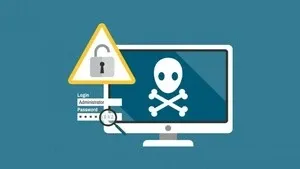This plan includes
- Limited free courses access
- Play & Pause Course Videos
- Video Recorded Lectures
- Learn on Mobile/PC/Tablet
- Quizzes and Real Projects
- Lifetime Course Certificate
- Email & Chat Support
What you'll learn?
- What is Cyber security and Importance of cyber security?
- Role of SOC in Cyber security
- SOC Hierarchy and roles and responsibilities
- Cyber security demand and Entry level trainings and Certifications
- Introduction To Networking
- Cyber Defense Concepts for SOC
- Popular Securirty Frameworks Like Mitre ATT&CK &CYber kill chain
- Malwares Family
- Cryptography
- Incident response for SOC
- Impotence of SIEM in SOC
- Elastic search SIEM
Course Overview
A SOC is a centralized unit within an organization that is responsible for monitoring, analyzing, and responding to security-related events and incidents. The SOC team is responsible for detecting and responding to security threats in real-time and works to prevent security breaches and minimize the impact of incidents that do occur.
A SOC analyst is a member of a SOC team who is responsible for monitoring and analyzing security events and alerts.
The analyst uses a variety of tools and techniques, such as security information and event management (SIEM) systems, intrusion detection systems (IDS), and endpoint detection and response (EDR) tools, to detect potential security incidents.
SOC analysts must have a strong understanding of security concepts, such as network security, access control, and incident response, as well as the ability to analyze and interpret security data.
They must also be able to work collaboratively with other members of the SOC team, including incident responders and security engineers, to investigate and respond to security incidents.
Overall, SOC analysts play a critical role in an organization's security posture, helping to protect sensitive data and systems from cyber threats.
This course helps you to learn and implement those strategies and with training provided. This will in turn help you play a significant role in defending against cyber threats and keeping sensitive information secure.
Pre-requisites
- Basic Computer Knowledge
Target Audience
- IT professionals looking to start a Cybersecurity Career
- Non-IT Professionals wanting to start Cybersecurity Career
- People from Non-Technical backgrounds
- Graduates People from Non-Technical backgrounds
Curriculum 48 Lectures 20:40:40
Section 1 : Introduction to Cyber Security
- Lecture 2 :
- Three Pillars of Cyber security
- Lecture 3 :
- Major Cyber Threats
- Lecture 4 :
- What is SOC in Cyber security
- Lecture 5 :
- What is SOC Team and SOC roles and responsibilities. SOC models
- Lecture 6 :
- Instructor Profile
Section 2 : Basics of Networking and Network Security Components
- Lecture 1 :
- What is Computer Network and Types of Computer Networks
- Lecture 2 :
- OSI (Open Systems Interconnection) Layers
- Lecture 3 :
- TCP-3 Way Handshake
- Lecture 4 :
- Practical TCP 3 Way handshake in Wireshark
- Lecture 5 :
- Difference between TCP and UDP
- Lecture 6 :
- IP addresses and classes of IP addresses
- Lecture 7 :
- What is MAC Address
- Lecture 8 :
- Quick recap of IP and MAC With Realtime Scenario
- Lecture 9 :
- How DHCP Works
- Lecture 10 :
- How DNS Works
- Lecture 11 :
- DNS Quick recap and DNS records
- Lecture 12 :
- How SMTP Works and Different Port numbers
- Lecture 13 :
- Understanding Of Network Architecture and Network devices
- Lecture 14 :
- How Firewall works
- Lecture 15 :
- How IDS/IPS works
- Lecture 16 :
- Quick recap of Firewalls and Types of Firewalls, IPS modes
- Lecture 17 :
- What is Proxy device and Types of Proxy devices
Section 3 : CIA & Cryptography
- Lecture 1 :
- CIA (Confidentiality, Integrity, Availability)
- Lecture 2 :
- Cryptography-Symmetric and Asymmetric Encryption
- Lecture 3 :
- Difference Between Symmetric and Asymmetric Encryption
Section 4 : Essential Security Terminology in Security Operations Centers (SOC)
- Lecture 1 :
- 10) Commonly used Security Terms in SOC and Definitions of it
Section 5 : Malware Family
- Lecture 1 :
- What is Malware and Types of Malwares
- Lecture 2 :
- Malware analysis Lab setup
Section 6 : CYBER DEFENCE ESSENTIALS
- Lecture 1 :
- Cyber Kill Chain methodology
- Lecture 2 :
- MITRE ATT&CK framework.
- Lecture 3 :
- Incident Response (IR) principles
Section 7 : Phishing Email Analysis
- Lecture 1 :
- Email Analysis
- Lecture 2 :
- Phishing Analysis from Realtime Phish emails
- Lecture 3 :
- Types Of Phishing
- Lecture 4 :
- Incident response for Phishing attacks
Section 8 : Cyber attacks
- Lecture 1 :
- Password attacks
- Lecture 2 :
- DOS and DDOS Attacks
- Lecture 3 :
- Spoofing :IP spoofing and DNS Spoofing
Section 9 : SIEM (Security information and event management)
- Lecture 1 :
- What is SIEM in SOC and Popular vendors in SIEM
- Lecture 2 :
- Journey of Elastic SIEM _ Introduction to Elastic SIEM and Architecture
- Lecture 3 :
- Elastic SIEM GUI introduction
- Lecture 4 :
- Elastic SIEM GUI introduction Part 2
- Lecture 5 :
- Introduction To Splunk and Components
- Lecture 6 :
- Splunk Installation and Commands
- Lecture 7 :
- Splunk (Conti..)
- Lecture 8 :
- Windows Logs integration to Elastic search
- Lecture 9 :
- Please Leave Your Feedback
Our learners work at
Frequently Asked Questions
How do i access the course after purchase?
It's simple. When you sign up, you'll immediately have unlimited viewing of thousands of expert courses, paths to guide your learning, tools to measure your skills and hands-on resources like exercise files. There’s no limit on what you can learn and you can cancel at any time.Are these video based online self-learning courses?
Yes. All of the courses comes with online video based lectures created by certified instructors. Instructors have crafted these courses with a blend of high quality interactive videos, lectures, quizzes & real world projects to give you an indepth knowledge about the topic.Can i play & pause the course as per my convenience?
Yes absolutely & thats one of the advantage of self-paced courses. You can anytime pause or resume the course & come back & forth from one lecture to another lecture, play the videos mulitple times & so on.How do i contact the instructor for any doubts or questions?
Most of these courses have general questions & answers already covered within the course lectures. However, if you need any further help from the instructor, you can use the inbuilt Chat with Instructor option to send a message to an instructor & they will reply you within 24 hours. You can ask as many questions as you want.Do i need a pc to access the course or can i do it on mobile & tablet as well?
Brilliant question? Isn't it? You can access the courses on any device like PC, Mobile, Tablet & even on a smart tv. For mobile & a tablet you can download the Learnfly android or an iOS app. If mobile app is not available in your country, you can access the course directly by visting our website, its fully mobile friendly.Do i get any certificate for the courses?
Yes. Once you complete any course on our platform along with provided assessments by the instructor, you will be eligble to get certificate of course completion.
For how long can i access my course on the platform?
You require an active subscription to access courses on our platform. If your subscription is active, you can access any course on our platform with no restrictions.Is there any free trial?
Currently, we do not offer any free trial.Can i cancel anytime?
Yes, you can cancel your subscription at any time. Your subscription will auto-renew until you cancel, but why would you want to?



 Tech & IT
Tech & IT
 Business
Business
 Coding & Developer
Coding & Developer
 Finance & Accounting
Finance & Accounting
 Academics
Academics
 Office Applications
Office Applications
 Art & Design
Art & Design
 Marketing
Marketing
 Health & Wellness
Health & Wellness
 Sounds & Music
Sounds & Music
 Lifestyle
Lifestyle
 Photography
Photography

















